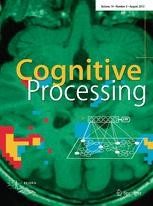Concentration spans drop when online ads pop up
Measurements of brain activity show emotional state and concentration are affected by intrusive online marketing
Heidelberg | New York, 12 June 2017
 Two Polish researchers have shown that measurements of the brain’s electrical activity can be used to test the influence of intrusive online advertisements on internet users’ concentration and emotions. The exploratory study was conducted by Izabela Rejer and Jaroslaw Jankowski of the West Pomeranian University of Technology in Poland, and is published in Springer’s journal Cognitive Processing.
Two Polish researchers have shown that measurements of the brain’s electrical activity can be used to test the influence of intrusive online advertisements on internet users’ concentration and emotions. The exploratory study was conducted by Izabela Rejer and Jaroslaw Jankowski of the West Pomeranian University of Technology in Poland, and is published in Springer’s journal Cognitive Processing.
Rejer and Jankowski’s direct, objective and real-time approach extends current research about the effect of intrusive marketing on internet users. So far, most studies on this topic have been subjective in nature, and have typically analysed only the impact of online advertisements on brand awareness and memory. Other researchers have investigated web users’ visual attention, recorded their behaviour, or relied heavily on subjective information provided in questionnaires.
In Rejer and Jankowski’s experiment five Polish men and one woman, between 20 and 25 years years of age, were instructed to read ten short pages of text on a computer screen, after which they had to answer questions about the content. During the reading process, their attention was distracted when online advertisements randomly appeared on screen. The brain activity of each participant was measured using an electroencephalogram (EEG). The researchers did not only take note of each participant’s brain signal patterns, but also analysed how consistent these were across the different trials, and how they correlated with those of others.
Two main effects were observed for most subjects. First, the presence of online advertisements influenced participants’ concentration. This was deduced from the significant drop in beta activity that was observed in the frontal/prefrontal cortical areas. According to the researchers, this could indicate that the presentation of the advertisement induced a drop in concentration levels.
Secondly, the appearance of the advertisement induced changes in the frontal/prefrontal asymmetry index. However, the direction of this change differed among subjects, in that for some it dipped, and for others it increased.
The researchers believe that the participants’ response to the advertisement might be influenced by their so-called motivation predisposition. “If the subject is more ‘approach’ oriented, the changes in the asymmetry index might reflect growing activity in the left brain hemisphere. If, on the other hand, the subject is more ‘withdraw’ oriented, these changes might reflect the growing activity in the right hemisphere,” explains Rejer, who also notes that this is only a hypothesis that should be tested in future work on the intrusive nature of different forms of online advertisements.
Reference: Rejer, I. & Jankowski, J. (2017). Brain Activity Patterns Induced by Interrupting the Cognitive Processes with Online Advertising, Cognitive Processing DOI 10.1007/s10339-017-0815-8
Further Information
About the Cognitive Processing
Services for Journalists
The full-text article is available to journalists on request.
Contact
Elizabeth Hawkins | Springer Nature | Communications
tel +49 6221 487 8130 | elizabeth.hawkins@springer.com
